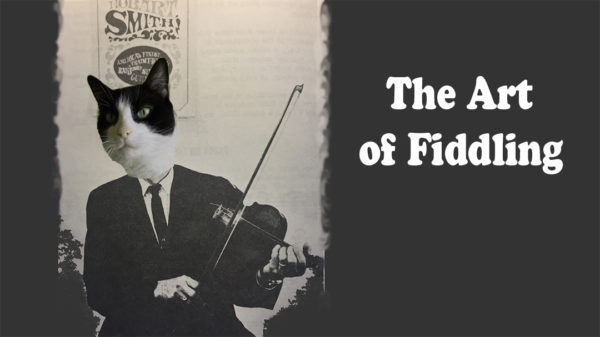Art of Fiddling

This is a collection of lessons, modules, and mini-courses designed to take your fiddling to the next level. You’ll learn new scales, bowing techniques and practice strategies which will help you to add variation to tunes. You’ll also learn things that prepare you for improvisation, playing chords and more.
Rhythmic Variation
Sliding the Left-Hand Fingers
Here’s a mini-course on sliding the left-hand fingers.
Preparation for sliding:
Here are the sliding lessons:
- [SLF: 1] Introduction To Sliding On The Fiddle
- [SLF: 2] Adding Slides to Tune Phrases
- [SLF: 3] Downward Slides
- [SLF: 4] Super-Fun Sliding Exercises
Melodic Variation
Melodic scale variation is the addition of little patterns to scales. This will better your technique, allow you to learn tunes more easily and give you ideas for improvisation. If you practice melodic variation, you’ll start to hear the scale in the tune.
- Melodic Scale Variation 1: 1-2-3 pattern
- Melodic Scale Variation 2: 1-2-3 pattern variations
- Melodic Scale Variation 3: 1-3 pattern
- Melodic Scale Variation 4: 1-3 pattern variations
- Melodic Scale Variation 5: 1-2-3-1 pattern
- Melodic Scale Variation 6: Pentatonic patterns
- Melodic Variation Workshop
Tunes for melodic variation practice
Vibrato
Adding Variation to Tunes
General Approach to Variation
My basic fiddlosophy on adding variation to music
Adding Variation To Fiddle Tunes
Mary Had A Little Lamb variation series
This moves from simple to more challenging versions. Familiar songs are a great way to practice variation and more challenging skills.
- Mary Had A Little Lamb – Basic
- Mary Had A Little Lamb – Hoedown variation 1
- Mary Had A Little Lamb – Hoedown variation 2
- Mary Had A Little Lamb – Melodic variation 1
- Mary Had A Little Lamb – Triplet variation
- Mary Had A Little Lamb – Cuts Variation
- Mary Had A Little Lamb – Rolls Variation
- Mary Had A Little Lamb – Figure 8 Bowing
Twinkle, Twinkle Little Star variation series
- Twinkle, Twinkle Little Star
- Fiddle Fiddle Little Star – hoedown variation
- Twinkle, Twinkle, Little Star – melodic variation
- Twinkle, Twinkle, Little Star – sawmill Tuning
Kerry Polka variation series
- Kerry Polka – basic
- Kerry Polka – adding double stops
- Kerry Polka – backup chords
- Kerry Polka – adding Irish variation
Adding variation to other tunes
When The Saints Go Marching In – Adding Variation
15 Ways To Practice Sail Away Ladies
17 Ways To Practice Jenny Lynn
Courses
To dive deeper into adding variation, take lessons in these courses:
Shifting Up The Neck
Orange Blossom Special
How To Play On Songs
Here’s lessons to help you play on songs. Learn strategies and techniques to help you play on songs with others.
- How To Play On Songs Workshop 1: The Foundation
- How To Play On Songs Workshop 2: Parts, Fills, Solos
- How To Sing And Play Backup Lesson
- How To Sing And Play Fiddle Backup On Your Song
- Playing Fiddle Backup On Girls Just Want To Have Fun
- Mandolin For Fiddlers
You can also learn to play chord backup on fiddle as sing. See this page of lessons if you want to go further with chord backup: Chord Backup Central
Improvisation
Pentatonic scales
Pentatonic scales unlock the power of variation
- Major Pentatonic Scales | FiddleHed
- Minor Pentatonic Scales | FiddleHed
- Minor Pentatonic Scales Workshop
Improvisation workshops
- Play Every Day Workshop 1: Improv-practice
- Play Every Day Workshop 5: Improv Playground
- Improvisation Workshop
Blues Fiddle
Practicing Call-and-response is a form of improvisation.
Melodic Variation is a form of improvisation. See the tab above for lesson links.

